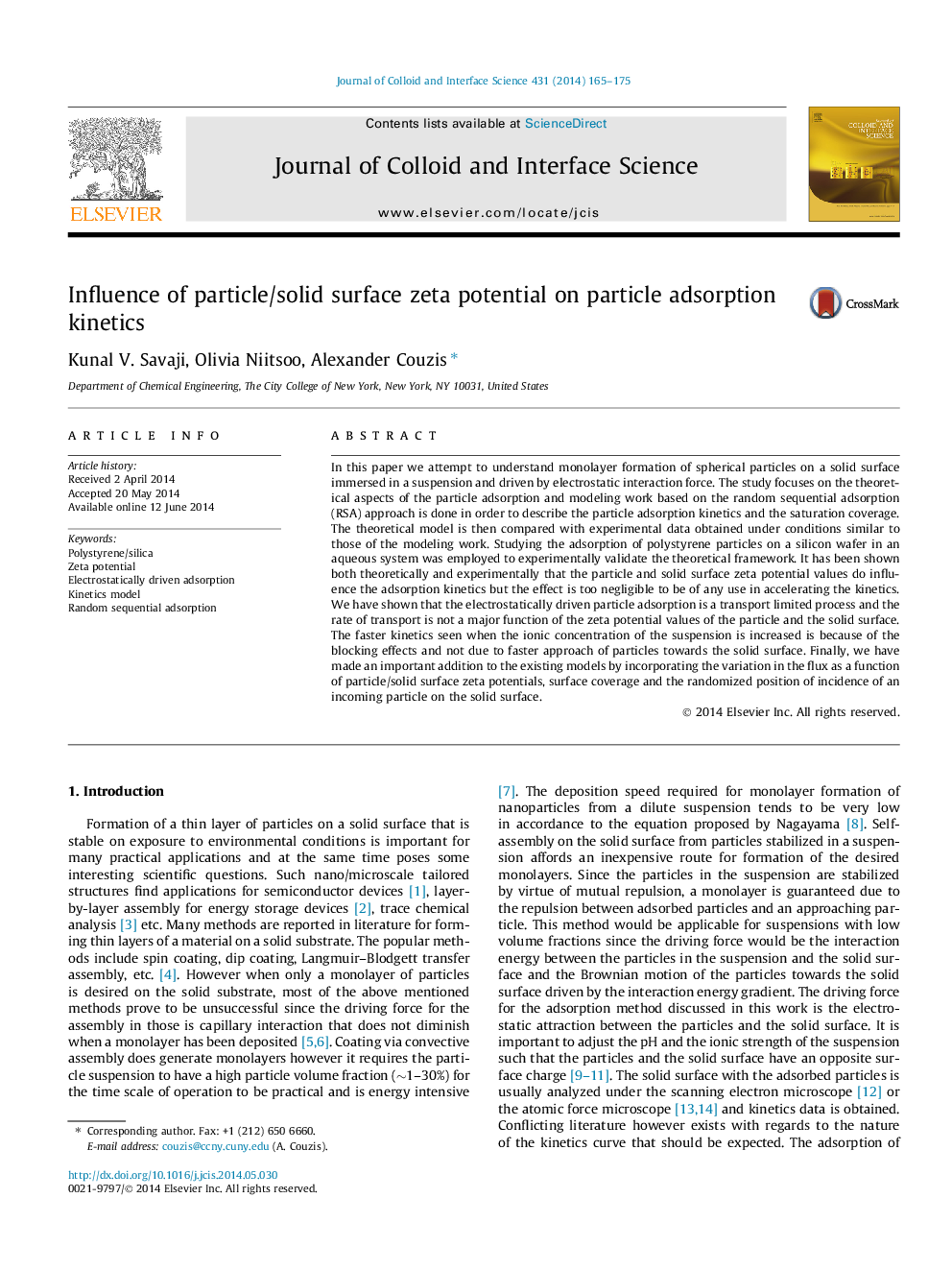| کد مقاله | کد نشریه | سال انتشار | مقاله انگلیسی | نسخه تمام متن |
|---|---|---|---|---|
| 607096 | 1454564 | 2014 | 11 صفحه PDF | دانلود رایگان |
• We model electrostatically driven particle adsorption at a solid/liquid interface.
• The model couples transport, energetics and geometry logic.
• Polystyrene particles and silicon wafer in D.I. water are used for experimental studies.
• Adsorption process is transport limited.
• Kinetics is not significantly influenced by particle and solid surface zeta potentials.
In this paper we attempt to understand monolayer formation of spherical particles on a solid surface immersed in a suspension and driven by electrostatic interaction force. The study focuses on the theoretical aspects of the particle adsorption and modeling work based on the random sequential adsorption (RSA) approach is done in order to describe the particle adsorption kinetics and the saturation coverage. The theoretical model is then compared with experimental data obtained under conditions similar to those of the modeling work. Studying the adsorption of polystyrene particles on a silicon wafer in an aqueous system was employed to experimentally validate the theoretical framework. It has been shown both theoretically and experimentally that the particle and solid surface zeta potential values do influence the adsorption kinetics but the effect is too negligible to be of any use in accelerating the kinetics. We have shown that the electrostatically driven particle adsorption is a transport limited process and the rate of transport is not a major function of the zeta potential values of the particle and the solid surface. The faster kinetics seen when the ionic concentration of the suspension is increased is because of the blocking effects and not due to faster approach of particles towards the solid surface. Finally, we have made an important addition to the existing models by incorporating the variation in the flux as a function of particle/solid surface zeta potentials, surface coverage and the randomized position of incidence of an incoming particle on the solid surface.
Figure optionsDownload high-quality image (52 K)Download as PowerPoint slide
Journal: Journal of Colloid and Interface Science - Volume 431, 1 October 2014, Pages 165–175
